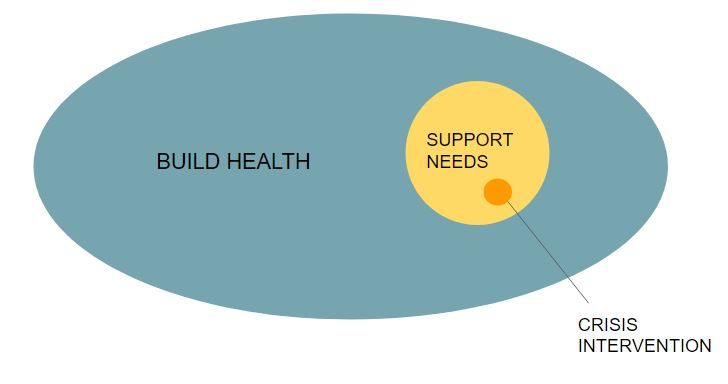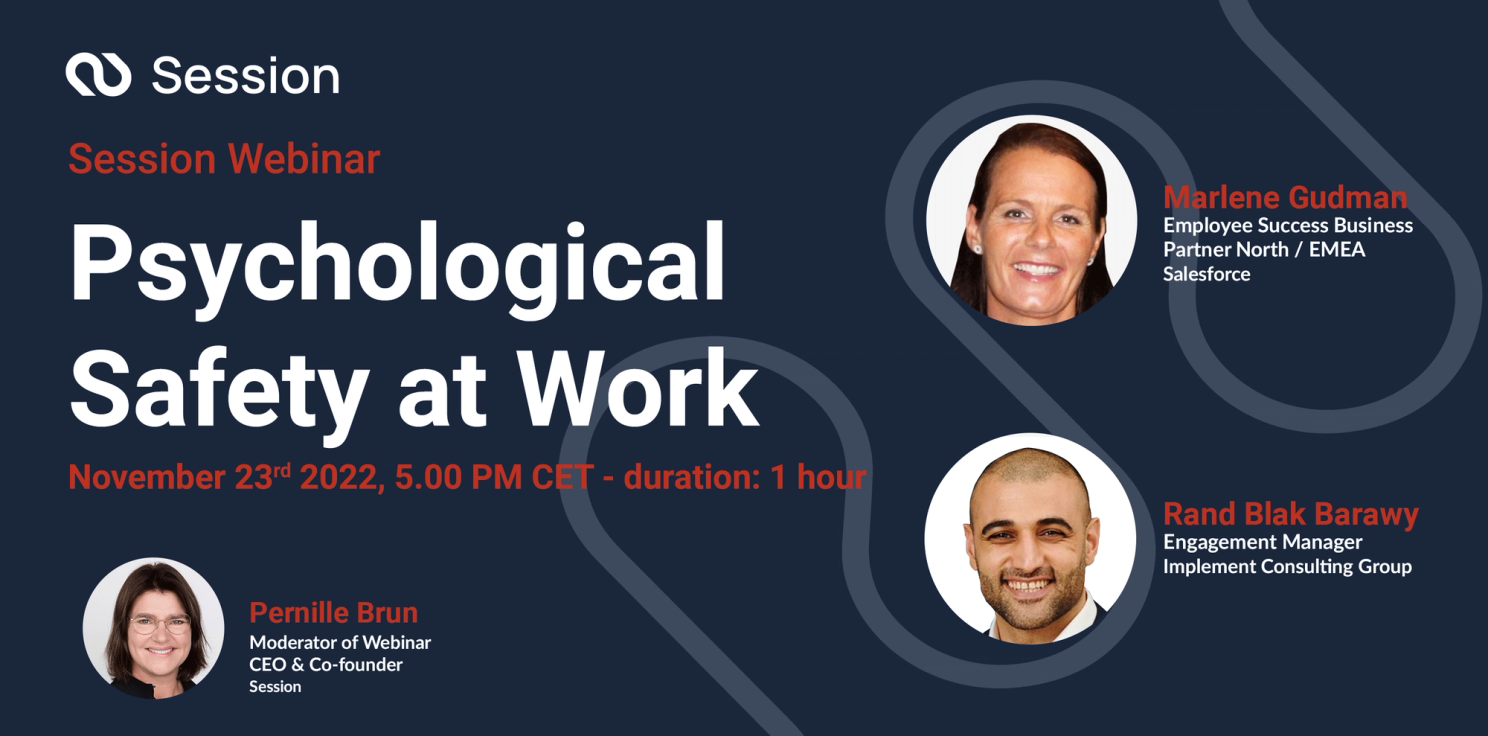In the midst of a global crisis HR professionals know that supporting employees has never been more important. We also know that we are operating without a roadmap in these unprecedented times. So let’s make one of our own. We have a rare opportunity to recalibrate how we support mental health and emotional well-being in the workplace, and what’s needed is not a deficit-oriented roadmap, but a proactive one.
A Proactive Approach to Mental Health at work
Organizations must effectively solve problems in order to succeed and most are very good at it. Unfortunately many organizations have approached the task of ensuring mental health at the workplace in the same way - as a problem to be solved. Organizations tend to focus on reactive mental health needs, ramping up support during moments of crisis, instead of proactively preventing. For example, standard HR practice is to provide Employee Assistance Programs (EAP) to support employees and their families when they encounter challenges, create programs to support point-in-time humanitarian needs, and train managers to have conversations with employees who are struggling.
In other words, we risk centering workplace support around mental illness rather than mental health. We may fall into the trap of deficit-thinking, investing in fixing things that aren't working through needs analyses, problem definition, and root cause analyses, rather than taking a regenerative approach, where we do not see people as problems to be solved, but real-life human beings in need of certain systems, structures, surroundings to make them flourish.
The problem solving approach is not working because it’s reactive and therefore incomplete. What’s missing is a vision for the future, one in which we ask more of ourselves and our organizations than simply building a system with “lack of mental illness”. In the future of work, successful organizations will build health and wellbeing for employees.
Promoting Health and Wellbeing to the Benefit of All
To build health and happiness at work, we need to create systems of practice that enable people to thrive rather than remediate challenges when they are not thriving. We should look for what is going well or what could work and build from there, as in the tradition of Positive Psychology.
To that end, we can reframe the traditional definition of health from “a person’s mental and physical condition” to one in which positive outcomes are assumed and therefore pursued; health becomes “the mental and physical condition of strength, capability, and resilience”. Similarly, wellbeing can be summarized as “physical, mental, social, and emotional stability and balance”. Taken together, health and wellbeing create a holistic state in which we can thrive, navigate life successfully and enjoy the bumpy ride.
When we are healthy and experience wellbeing we have better outcomes in every aspect of our lives. Shawn Achor has identified a Happiness Advantage wherein our brain in a positive state performs 31% better. Happiness has been shown to impact intelligence, creativity, and energy levels.
And of course when we are not mentally and emotionally healthy it similarly impacts everything we do. Therefore - promoting happiness and engagement of work is simply good business.
Healthy Employees and Organizations = Better Performance
Employee health and wellbeing are intrinsically linked to organizational outcomes. When employees have access to effective support systems at work they perform better and so does the company.
Research has shown that organizations with strategic, systemic health practices for employees outperform their peers. They are 540% more effective at recruiting top talent, almost 11 times more likely to have low levels of absenteeism, and 220% more likely to meet financial targets. In other words, employee health and wellbeing drive business success.
Josh Bersin defines such companies as Healthy Organizations and they are characterized by a strategic, holistic view of wellbeing embedded in culture, a focus on work, workers, and the organization, and active leadership support. But not many companies are operating this way. Bersin’s research found that only 15% of companies could be classified as Healthy.
To create healthy organizations we must resist the temptation to limit our actions to problem solving through real-time mental health crises and instead reach for the harder, more rewarding task of proactively building a system that enables employees to thrive.
Building Healthy Organizations - A Holistic Approach
An effective system of healthy practices needs to span the entire operating model of an organization, and be a core part of the company culture (or “how we do things here”). We can expect to see these practices reflected in HR policies and programs. We also need to see them embedded into every day business operations such as how we treat each other, how we live our values, how we make decisions, how teams function, and how leaders communicate.
To build healthy, flourishing organizations we need 3 different approaches, each with their own corresponding level of investment. Lets take a closer look at how these approaches holistically work together:

1. Building for Health
This approach is proactive, and includes a business operating model that proactively builds mental health and wellbeing across the employee lifecycle, supports long term policies and programs as well as participation from all stakeholders (individual, team, leadership, organization). The biggest investment should be made here.
2. Supporting Needs
This approach is both proactive and reactive, and includes preparing policies and programs to respond when mental health needs arise, as well as creating communication plans, response protocols, stakeholder outreach and support. Some investment should be made here.
3. Crisis Intervention
This approach is reactive, and includes responding to individual or environmental crises when they occur, identifying cross functional responses. This should represent the smallest investment.
When these 3 approaches work together it creates a strategic system of practices for employee health and wellbeing.
Typically organizations invest in system 2 and 3 (Supporting Needs and Crisis Intervention), but do not focus on the area that needs the largest investment - system 1 - Building for Health. However, our reactive approaches to mental health are simply not enough! If we want to create flourishing organizations and celebrate healthy and happy employees, we need to start investing more into system 1, the preventive and proactive system.
Use Cases for DEI and Startups
What would that look like? Let’s examine how this proactive system of healthy organizational practices could play out in organizations proactively working with DEI, as well as in Startups.
DEI: How can we create health and wellbeing for underrepresented groups?
Many companies set diversity hiring goals with the honorable intention to provide opportunity and level the playing field for underrepresented groups. While this is a good start, it is reactive problem solving (we need to have more diversity than we do today) rather than healthy organization building (we need to value and draw from diverse lived experiences, and create inclusive spaces where everyone belongs).
Building a healthy system of practice expands our approach. For example, we could address unconscious bias in our job descriptions and hiring practices, create platforms for underrepresented groups to be heard and act on their insights, remove barriers to entry within our industry, and take a stand against widespread global systemic injustice.
A Healthy Organization would create an environment in which prejudice and injustice can no longer flourish, thus contributing to the health and wellbeing of underrepresented groups at our organization and beyond.
Startups: How can we create health and wellbeing in a start up environment?
Start ups are fast paced and stressful environments. The stakes are high, with big risks and big rewards. This is highly motivating for people who join start ups, and stress can have a positive impact on performance, particularly if it’s in service of a shared mission. But stress has a point of diminishing returns. The key in start ups is to prevent founders and employees from burning out, which not only impacts the employee but business results and long term employer brand as well.
To create a healthy start up culture, we focus on maintaining positive employee stress levels and build a system of practices around that. For example, to create positive stress we could offer a stretch opportunity program, have pitch competitions, create individual development plans (IDPs) to understand career goals and work toward achieving or even exceeding them, or incentivize achievement with a meaningful bonus structure.
To mitigate negative stress, we could analyze workload data for imbalances and distribute evenly, senior leaders could model taking time off, we could offer Communities of Practice (POC) where peers can connect and vent, or build a protocol to proactively identify when an employee is about to reach the tipping point of stress (by self report, managers, peers, and HR) and implement programs to de escalate.
We create health and wellbeing for Startup founders and employees when we proactively create an environment where stress is managed intentionally in their service.
Conclusion
Prioritizing employee mental health and wellbeing is a strategic priority that pays off, not only for the individual leader or employee, but also for the business at a larger scale.
We have an opportunity to shift how we address mental health within organizations. Many organizations are unfortunately centered around reactive problem solving and risk mitigation. A more proactive approach is to build positive health and wellbeing for employees upfront. If we create a system of practice that appropriately balances 1) building health, 2) supporting needs, and 3) providing crisis intervention, we will succeed and the organization will flourish.
As HR leaders and managers, we are our employees’ advocates in this shift. Let's stand with our employees and proactively prioritize employee health and wellbeing.













